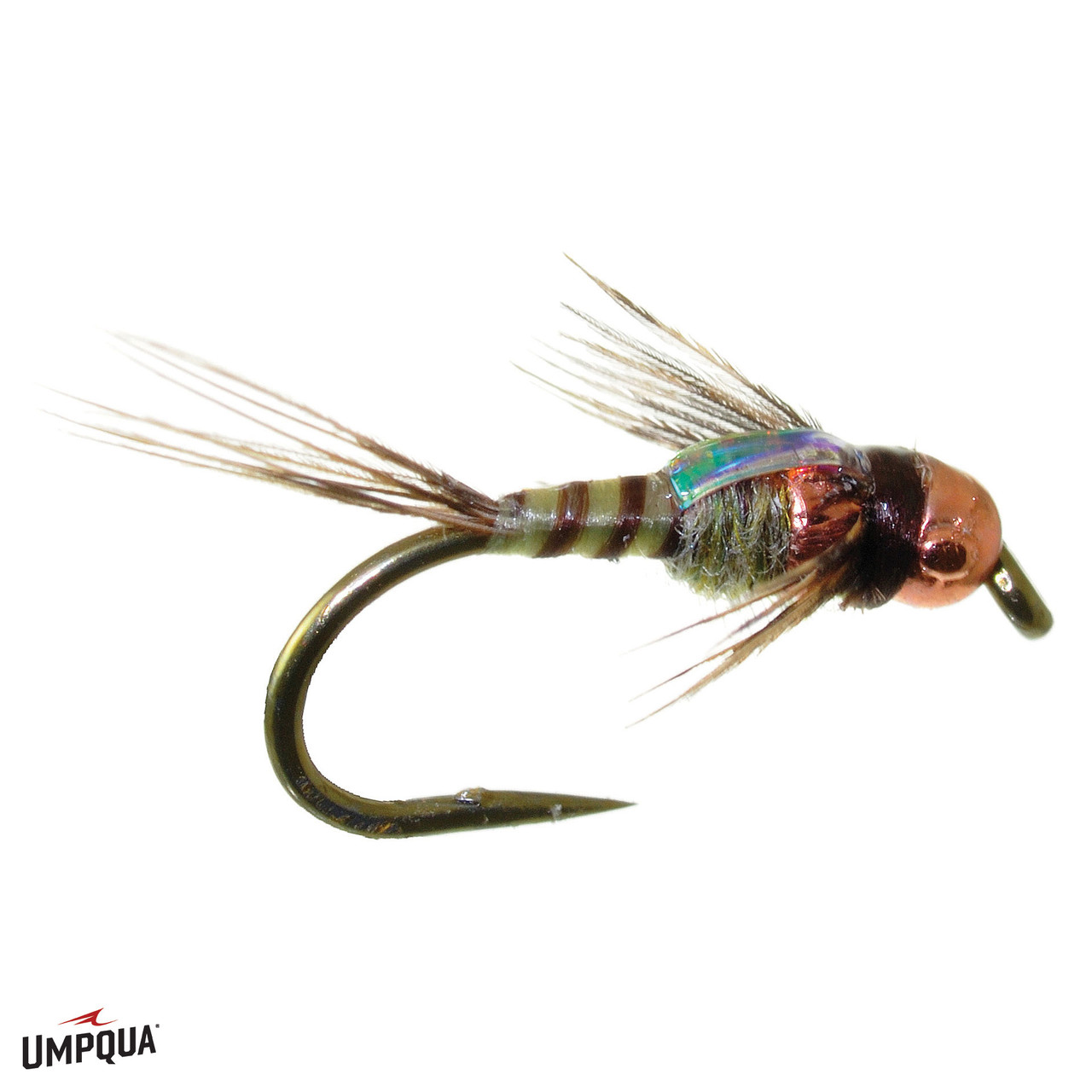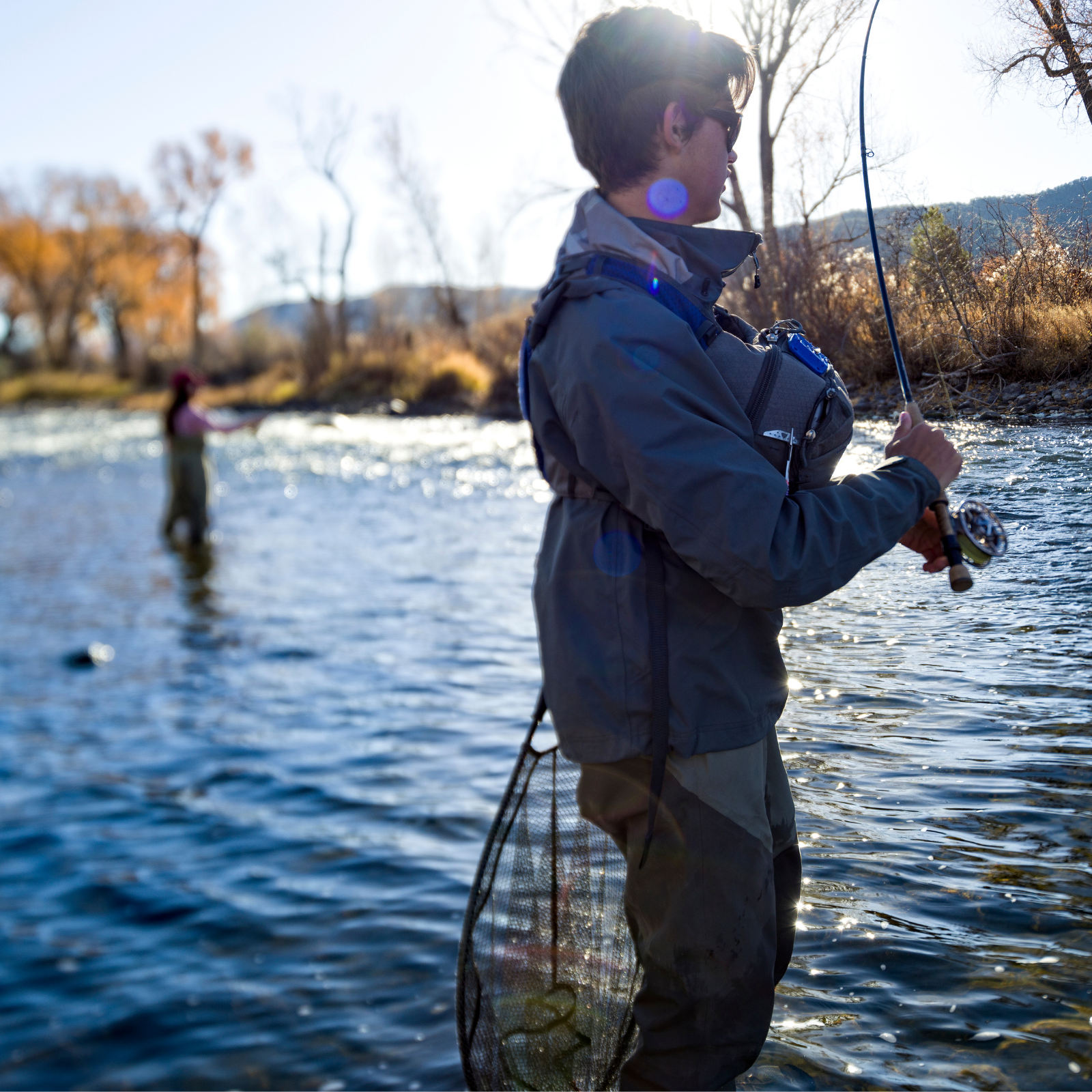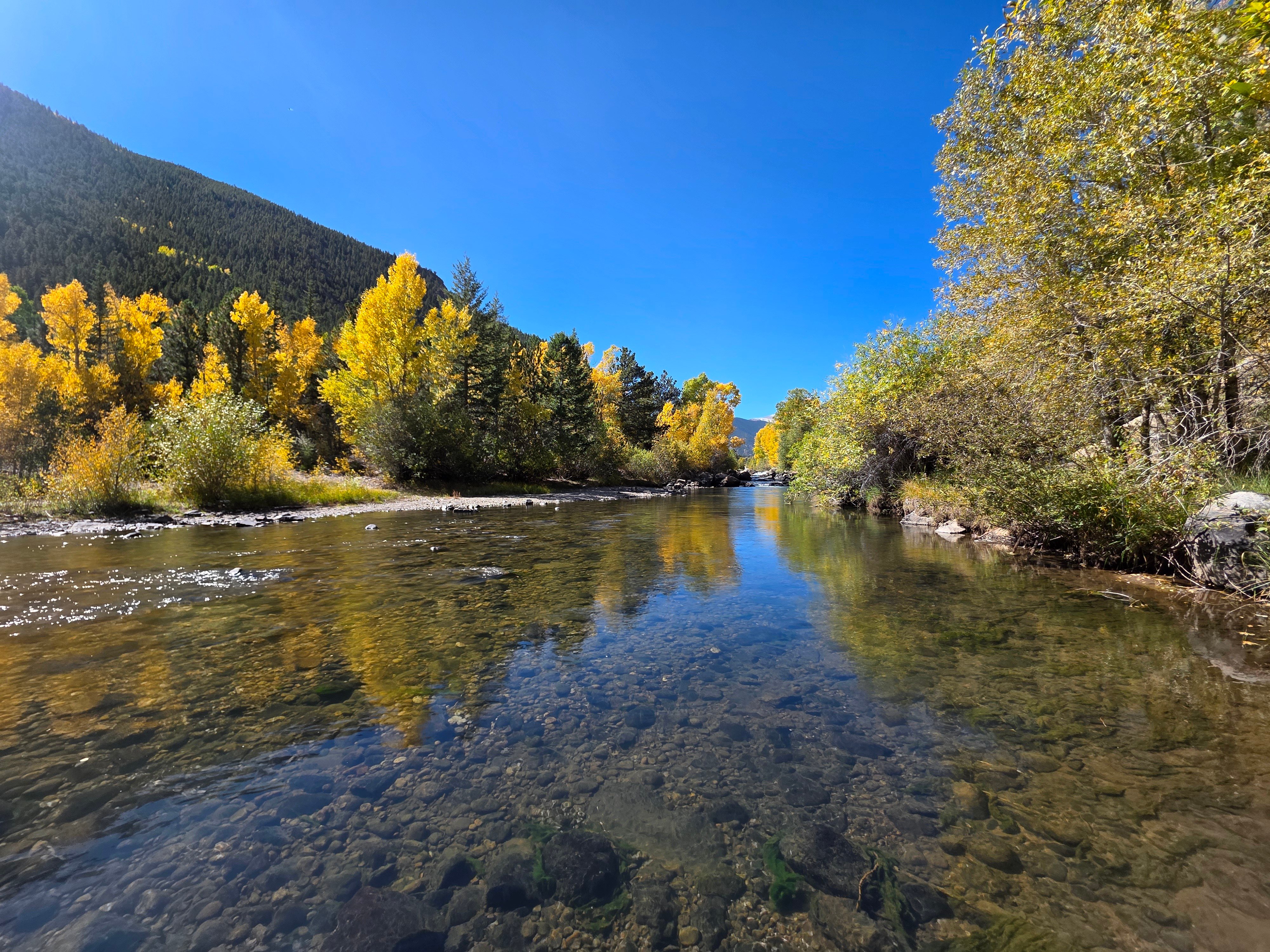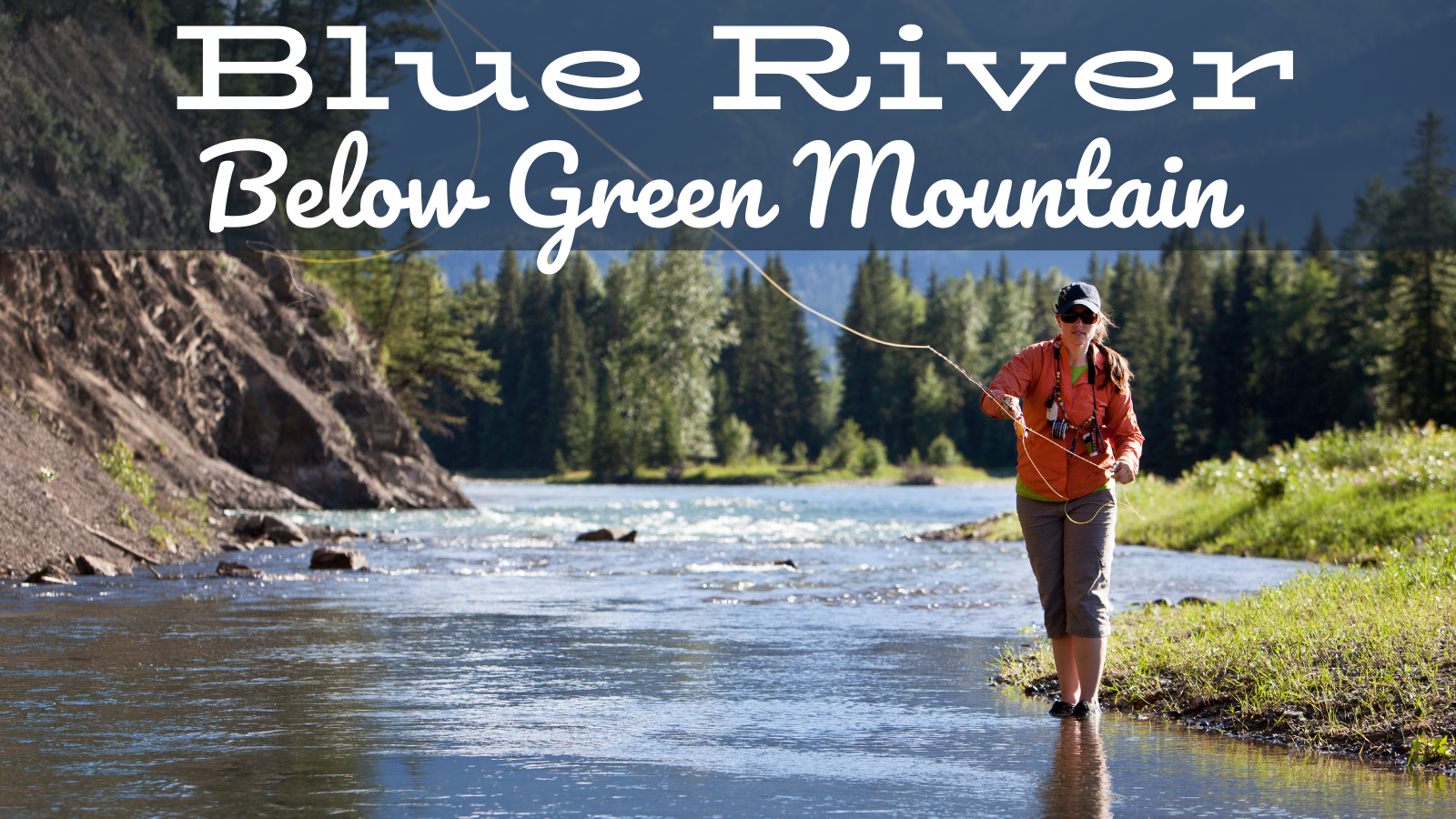Welcome to Small Fly Season
By October, Colorado trout have seen everything.
They’ve been peppered with hoppers, buzzed by streamers, and laughed at your size-12 attractors since June. Now they’re spooky, selective, and laser-focused on small, natural nymphs.
Fall is when fly boxes shrink and drifts get cleaner. It’s when “just one more good cast” turns into “okay, one more hour.”
So if you’re ready to trade bravado for precision, here are the best fall nymph patterns for Colorado — plus the rigs and tactics that actually get eaten when the leaves are gone and the water runs thin.
Top Flies for Colroado Nymphing
1. RS2 (Gray or Olive #20–22)

Why it works:
Because BWOs run the fall buffet, and the RS2 is the most convincing “I’m-almost-a-mayfly” imitation you can throw.
Best waters: Dream Stream, Deckers, Blue River, and South Platte tailwaters.
How to rig it:
- Run it as the dropper fly under a Barr’s Emerger or small dry (Parachute Adams #20).
- 6X fluorocarbon, 12–16" between flies.
- Use a micro split shot if depth exceeds 3 feet.
Pro tip:
Let it swing out naturally at the end of the drift. The soft lift often seals the deal — BWOs don’t hatch on dead drifts, and neither should your fly.
2. Barr’s Emerger (BWO #20–22)

Why it works:
It’s the RS2’s louder cousin — more flash, more profile, more movement. Trout eat it when they’re ready to commit.
Best waters: Cheesman Canyon, Arkansas near Salida, or the Frying Pan.
How to rig it:
- Anchor fly in a two-fly nymph setup, RS2 or WD-40 trailing.
- Use a small yarn indicator or a high-vis dry fly as your visual cue.
- Keep depth adjustable; fish it just above the mid-column.
Pro tip:
When trout are feeding high, ditch the indicator and grease your leader for subtle surface drifts.
3. Zebra Midge (Black, Red, or Olive #22–24)

Why it works:
Because midges are like coffee in Colorado — always available, always needed.
Best waters: Blue River, Bear Creek, Yampa, and South Boulder Creek.
How to rig it:
- Dropper fly under a light dry (Parachute Adams or Hi-Vis BWO).
- Fish double midge rigs with contrasting colors — black + olive, red + silver.
- Use 6X tippet and keep the drift as drag-free as possible.
Pro tip:
When in doubt, downsize. If #20 isn’t working, tie on a #24. The fish will notice — your ego shouldn’t.
4. Pheasant Tail (Flashback or Natural #18–20)

Why it works:
It covers nearly every small mayfly on the menu and adds subtle flash that triggers pre-winter aggression.
Best waters: Upper Arkansas, Clear Creek, and Poudre Canyon.
How to rig it:
- Lead fly in a standard nymph rig.
- Add a small midge (Zebra or WD-40) as a trailer.
- Adjust split shot so the Pheasant Tail ticks bottom occasionally — not constantly.
Pro tip:
Use a tungsten bead in faster water, and a non-bead version when fish move into slower fall pools.
5. Two-Bit Hooker (Brown or Olive #16–18)

Why it works:
It’s sleek, heavy, and sinks fast — perfect for low flows and short drifts where split shot feels clunky.
Best waters: Roaring Fork, Gunnison, and Eagle River.
How to rig it:
- As a solo fly in shallow riffles.
- Use tight-line or Euro-style nymphing methods with a long leader and no indicator.
- High-stick near seams and structure.
Pro tip:
This fly is your “get-down-fast” option when temps drop and fish hunker deep.
6. WD-40 (Gray or Chocolate #20–24)

Why it works:
Because sometimes the simplest fly wins. The WD-40 is subtle, sparse, and deadly when trout turn off the flash.
Best waters: Deckers, Cheesman, and lower South Platte.
How to rig it:
- Trail behind a heavier emerger or bead-head pattern.
- Use under an RS2 or small attractor.
- Light shot optional — this fly rides high in the drift.
Pro tip:
Fish it through transition zones between riffles and pools — the “food conveyor belt” every trout loves.
7. JuJu Baetis (Purple or Olive #20–22)

Why it works:
Because fall trout are cynical, and this fly’s translucent shimmer screams “authentic.”
Best waters: Blue River, Frying Pan, or any clear tailwater.
How to rig it:
- Run tandem with a plain RS2 below.
- 5–6X tippet, minimal weight, subtle presentation.
- Fish mid-column, especially when clouds linger.
Pro tip:
Grease your leader to track the drift — strikes can feel more like hesitation than hits.
8. Egg & Midge Combo (October–November Only)

Why it works:
When brown trout spawn, eggs roll, and everything else eats the leftovers.
Best waters: Dream Stream, Blue River below Dillon, and Roaring Fork.
How to rig it:
- Lead with a small egg pattern (#14–16).
- Trail with a Zebra Midge or RS2 (#20–24).
- Use 5X–6X and enough weight to tap bottom occasionally.
Pro tip:
Avoid fishing to actively spawning trout — target downstream drift lanes where opportunistic feeders are waiting.
Fall Nymphing Tactics That Actually Work
- Drift short, not far. Colorado’s fall trout hold in tight, defined seams. Accuracy beats distance.
- Depth discipline. Adjust split shot or tungsten size constantly. If you’re not changing weight, you’re guessing.
- Indicators optional. In skinny fall water, yarn or dry-dropper rigs spook fewer fish.
- Shadow management. Mid-day sun means spooky trout — approach low and cast upstream.
- Rotate rigs. Fish one “confidence” fly (like RS2) and one experimental fly — you’ll cover more triggers.
Closing Cast
Fall nymphing in Colorado is a lesson in subtlety. It’s not about flashy flies or fancy rigs — it’s about reading seams, adjusting depth, and being patient enough to fish like you mean it.
Every October drift is a small act of faith: you can’t see the fly, the fish, or the take — but you know it’s happening.
And when that line twitches? Well, that’s what keeps us all coming back.
.png?width=300&height=100&name=Copy%20of%20Rise%20Beyond%20Logo%2012.31.24%20(300%20x%20100%20px).png)
.png)


